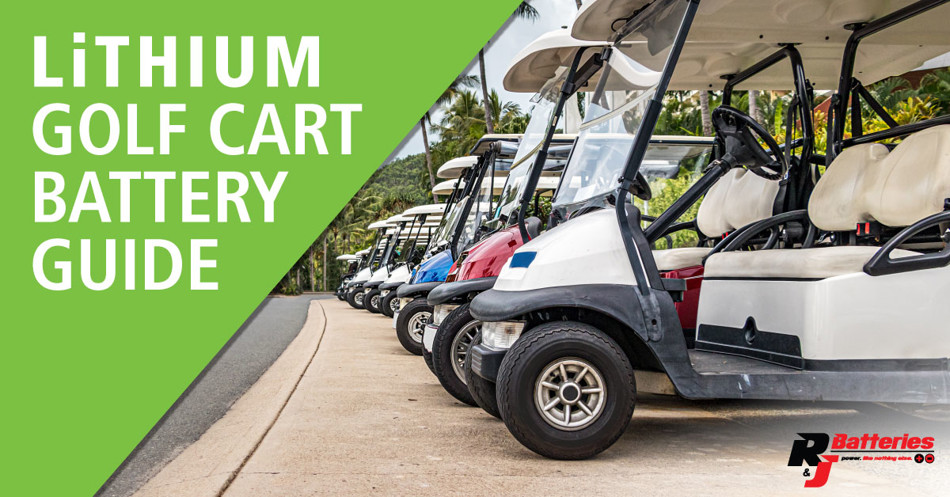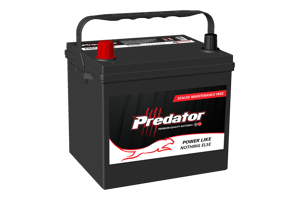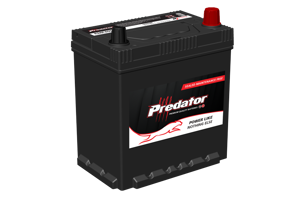Battery 101: Lithium Golf Cart Battery Guide
History
The history of golf carts dates to the early 20th century. The early versions of the cart were created to assist the elderly or differently abled in enjoying a game of golf without the need for walking or hiring caddies. The first motorized golf carts began to appear on golf courses in the 1930s however, their use was restricted as they were too loud. Due to the increasing popularity of golf in the 1950s and the desire for greater convenience on the course, golf cart manufacturers started producing purpose-built electric and gasoline-powered carts. While the basic design of the golf cart has not changed significantly, the adoption of new technologies has made them quieter, more durable, and safer than ever before. Today, golf carts provide a hassle-free experience for golfers around the world and have been adopted for use in various other industries as well.

Different Types of Golf Cart Batteries
There are three main types of batteries widely used in golf carts:
- Flooded Lead Acid
- Absorbent Glass Mat (AGM) Lead Acid
- Lithium Iron Phosphate (LiFePO4)
Each of these battery types have their own pros and cons. Choosing the right golf cart battery comes down to your individual golf cart, the power requirements, usage profile and budget. Flooded lead acid batteries are the standard choice, proving a budget friendly solution for the average golf cart user. The AGM option is an upgraded version of this, allowing for greater performance and longevity, and also removes the need to top up the batteries with water periodically. LiFePO4 batteries are the top of the range option. They are the best option for performance, reliability and cycle life, and are perfect for those looking for a long term solution. Lithium batteries have been widely discussed in recent times and we’ll expand on these more below.
Not all Lithium is equal
It is important to note that not all lithium battery chemistries are created equal. Unlike lead acid batteries whose components and chemical reaction is similar, lithium batteries are more like a diverse family of various battery types which all have the lithium element in common.
There are a number of different chemistries used in lithium based batteries which all have different strengths and weaknesses. Many lithium ion batteries use manganese, nickel and cobalt in the cathode material as they help provide good energy density and performance. Unfortunately, Lithium NMC batteries also need to be monitored closely as they can become unstable and are susceptible to thermal runaway if they are operated outside of the stated parameters. These chemistries are not recommended by R&J Batteries for deep cycle applications like golf carts.
There are other lithium chemistries like lithium titanate (LTO) which are very safe and reliable for solar energy storage. Lithium Iron Phosphate (LiFePO4) batteries don’t have quite the energy density or high power capability of some of the other lithium ion batteries however they are safe, stable deliver an outstanding cycle life. Lithium Iron Phosphate (LiFePO4) batteries don’t have quite the energy density or high power capability of some of the other lithium ion batteries however they are safe, stable deliver an outstanding cycle life.
LiFePO4 batteries are safe; they are resistant to thermal runway and are often used in deep cycle applications like golf carts because their cycle life and stability make them an excellent drop-in replacement for lead acid batteries.
In this battery guide, we delve further into LiFePO4 batteries to understand what makes them a great choice for golf carts.
LiFePO4 Battery Chemistry
LiFePO4 batteries offer numerous benefits so it’s not hard to understand why they are so popular. They are renowned for their safety profile which is attributed to their exceptionally stable chemistry which enhances their safety compared to other lithium ion batteries which use the alternative cathode materials mentioned earlier.
LiFePO4 cells are incombustible, another crucial feature in cases of incorrect charging or discharging. They also withstand harsh conditions, including a relatively wide range of temperatures and vibration. In hazardous events such as collisions or short-circuits, they are unlikely to explode or catch fire, significantly reducing the risk of harm.
Quality LiFePO4 batteries also come with a Battery Management System (BMS) which is a critical element in a lithium based battery to ensure maximum safety and performance. The BMS monitors overall and individual voltages as well as current flow and temperature, and has the capability to isolate and protect the battery if the operating parameters are exceeded.
Why Upgrade to a Lithium LiFePO4 Golf Cart Battery?
While lead acid golf cart batteries have proven to be dependable over the years, there are many reasons to upgrade to a Lithium Iron Phosphate battery:
Lightweight
Lead acid batteries are notorious for being heavy. LiFePO4 golf cart batteries weigh less than 50% of the equivalent lead acid battery. This reduction in weight not only makes them easier to handle but reduces the overall weight of the cart. The motor requires less power to move a lighter golf cart. The increased usable capacity allows for fewer batteries to be installed, whilst maintaining the same useable range.
Safety
LiFePO4 batteries are not susceptible to thermal runway, which is the main cause of lithium battery fires. The electrolyte is also incombustible, which is a key difference to other lithium ion battery types. They have an onboard Battery Management System (BMS) which constantly monitors State of Charge, temperature and current flow, and will protect the battery from being over discharged or charged or even short circuited.
Faster Charging
LiFePO4 batteries can be charged at a much faster rate than lead acid batteries. For longevity, a lead acid battery needs to be charged between 5-10% of the battery capacity, whereas a lithium battery can comfortably be charged at 50%. At a 10% charge rate a 100Ah lead acid battery would take approximately 11 hours, whereas a similar sized LiFePO4 battery would take approximately 2.5 hours. The rapid charge capability of a Lithium Iron Phosphate battery reduces downtime and allows golf carts to get back on the course quickly.
Longer Cycle Life
LiFePO4 batteries have a significantly longer cycle life compared to lead acid batteries. Lithium batteries can last up to ten times longer, resulting in fewer replacements and a significantly lower total cost of ownership over time (Cost per Cycle).
Maintenance Free
Unlike flooded lead acid batteries which requiring watering, LiFePO4 batteries are virtually maintenance free. This saves time and effort for golf cart users and ensures consistent performance without the need for regular ongoing maintenance.
Eco-Friendly Technology
LiFePO4 batteries are non -toxic, and unlike most lithium ion cells do not contain any rare earth metals, which is yet another reason why they are the best lithium ion battery when considering the effect on our environment and planet. To recycle, simply drop off used batteries to your local R&J Batteries branch or distributor.
Golf Cart Battery Maintenance
While we did say LiFePO4 golf cart batteries don’t require much maintenance, that doesn’t mean they can be completely forgotten about. By taking care of your LiFePO4 battery, you can maximise its performance, extend the battery’s lifespan and reduce the need for replacements. Here are some helpful maintenance tips from the battery experts at R&J Batteries:
- Check the Connections – check the terminals and tighten any loose connections. Do not use any type of terminal spray on connections as this can affect performance. A thin smear of petroleum jelly (or dielectric grease) on the terminal before attaching the connectors will maintain the integrity of the connection.
- Ensure battery balance – If you are using 12V lithium batteries connected in series, it is important that the batteries remain balanced. Talk to any R&J Batteries store regarding our range of battery balancers.
- Check for Damage – Inspect the battery for signs of damage or aging. Not all battery damage is visible so if you experience a decline in performance or any other issues, please take it to your local R&J Batteries branch.
If you use your golf cart on a seasonal basis, it is even more important to conduct maintenance. It is not recommended to leave the batteries on a constant float charge. Once the battery is charged, switch off or remove the charger. If the batteries are being stored for an extended period of time (more than 3-4 months), it is recommended that you store them at a partial State of Charge (between 30% & 70% is good).
The Last Word
If you are a regular golfer, upgrading your standard lead acid battery to a Lithium Iron Phosphate battery will elevate your game to the next level. LiFePO4 batteries offer several features and benefits such as longer cycle life, safety, stability and reliability. While LiFePO4 batteries come with a high upfront cost compared to lead acid batteries, the cost per cycle is surprisingly low. Their longer cycle life also means that they need to be replaced less frequently.
If you are ready to make the switch to a LiFePO4 battery, drop in and have a chat with your local R&J Batteries branch about our ALLiON golf cart battery range.



